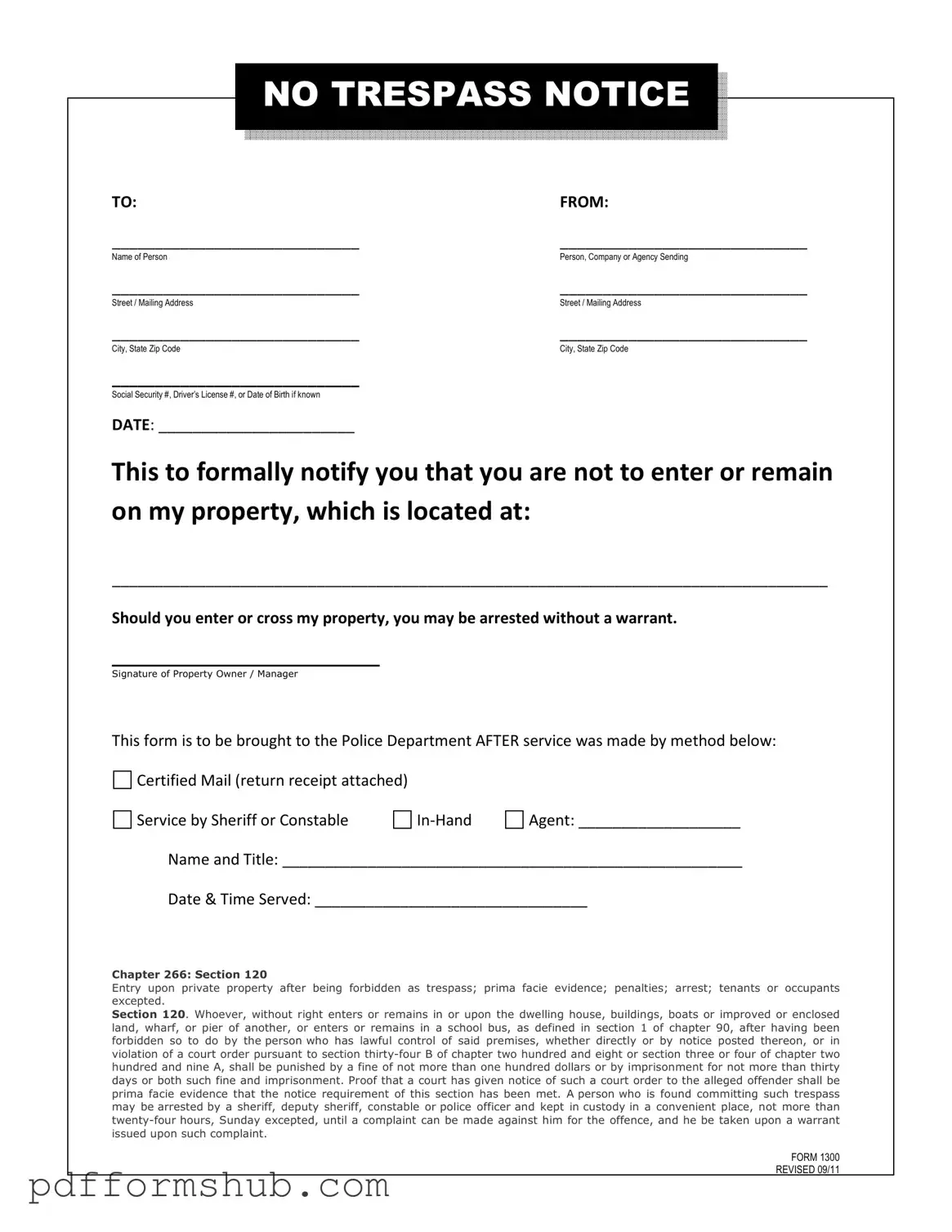Fill in Your No Trespassing Letter Form
A No Trespassing Letter is a formal document used to notify individuals that they are not permitted to enter or remain on a specific property. This letter serves as a clear warning and can provide legal backing should a trespasser ignore the request. To ensure your rights are protected, consider filling out the No Trespassing Letter form by clicking the button below.
Customize Form
